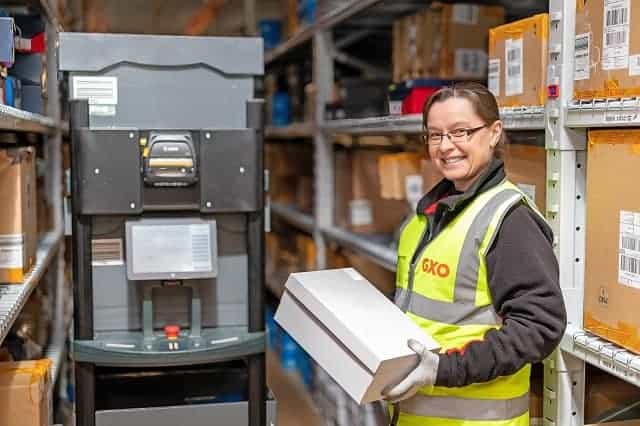Wondering how to gain competitive advantages? According to the market research firm, Gartner, “Supply chain planning (SCP) is the forward-looking process of coordinating assets to optimize the delivery of goods, services and information from supplier to customer, balancing supply and demand.” SCP considers every stakeholder, from raw materials suppliers to end customers, to build a cohesive plan to optimize a company’s production, sales and operations and develop key performance metrics to ensure efficient and cost-effective operations.
Efficient supply chain planning achieves three goals: lowering production costs, increasing sales and bolstering supplier relationships. In the 70s and 80s, companies like Walmart and Dell crushed their competition by gaining a competitive edge in supply chain and logistics. Behemoths like P&G leverage digital technologies in the supply chain to gain their competitive edge. Today, every business is capable of leveraging technology to improve operational efficiency. Here are six examples your company can leverage supply chain planning as a competitive advantage.
1. Engage in real-time supply chain planning

The recent worldwide COVID-19 pandemic has shown how the business landscape can shift in a very short time. How a business handles quick market shifts will determine its longevity. Supply chain analytics solutions can bring real-time data from every part of the business, from POS terminals to the mines from which raw materials are extracted. Companies can analyze large volumes of contextual data for accurate forecasting and shift plans according to rapidly changing market demands.
A change in demand expectation should be reflected in the requirements from suppliers. A contingency at the supplier end must change demand drivers such as the price of products. The technology to enable this does exist, but companies must put a strategy in place to manage changing business parameters and adapt to new requirements.
2. Develop a collaborative supply chain strategy
A large business has an expansive list of suppliers, vendors and distributors. These stakeholders should not be working in silos. All the participants should be working in a collaborative environment (rather than competing in the market) to maximize supply chain value and ensure customer delight.
The success of a company translates into success for its suppliers. Building and maintaining strong relationships with suppliers is equally as important as maintaining customer relations. Just like a company needs to satisfy customers, it needs to ensure the success of its suppliers and distributors. As such, effective supply chain management strategy must consider all the company’s stakeholders, with any strategic shifts implemented with supplier, vendor and distributor buy-in.
3. Adopt innovative supply chain automation solutions

In November 2019, McKinsey reported on findings from its latest McKinsey Global Survey on artificial intelligence adoption. Respondents answered questions about 33 artificial intelligence use cases across eight business functions and its impacts on costs and revenue. “Aggregating across all of the use cases, 63 percent of respondents report revenue increases from AI adoption in the business units where their companies use AI, with respondents from high performers nearly three times likelier than those from other companies to report revenue gains of more than 10 percent,” the report states.
In supply chain management, 14% of respondents reported cost decreases of more than 20% from AI adoption, while 16% saw cost decreases between 10 and 19%, and 31% saw cost decreases of less than 10%. In terms of revenue increases, 13% of respondents said that revenue growth from AI adoption was more than 10%, while 22% of respondents saw revenue increases between 6 and 10%, and 28% saw revenue increases of 5% or less.
In all, 44% of respondents realized cost savings in business units where AI was deployed, and AI adoption decreased those business units’ costs by an average of 10% or more. “The two functions in which the largest shares of respondents report cost decreases in individual AI use cases are manufacturing and supply-chain management. In manufacturing, responses suggest some of the most significant savings come from optimizing yield, energy, and throughput,” McKinsey explains. “In supply-chain management, respondents are most likely to report savings from spend analytics and logistics-network optimization.”
Automation solutions like collaborative mobile robots reduce picking errors, decrease the time required to fulfill an order and reduce the walking distance for associates. These benefits enable warehouse associates to work more efficiently and get more done in less time. For example, collaborative robots like Chuck by 6 River Systems guide associates through each task by navigating to the appropriate pick locations and displaying the items and quantities to pick, keeping associates on-task. Chuck leverages AI and machine learning to prioritize work based on the current conditions on the warehouse floor, group similar tasks together and optimize pick routes in real-time. 6 River Systems’ solution augments the work of human associates, improving resource utilization and boosting productivity by 2-3x for better cost-efficiency.
4. Implement agile process improvements
Implementing disruptive technology could lead to improvements in the supply chain. But as the name suggests, it is disruptive and can be a costly endeavor. On the other hand, agile process improvements seek constant and incremental improvement of processes.
The full impact of the agile process cannot be experienced on day one. Over the course of time, small and incremental improvements compound to a large shift. The advantage of an agile mindset is the low cost and low disruption required to implement incremental changes. Since the people involved in the process spearhead agile improvements, employees have a greater sense of ownership in the process and are more likely to embrace change. “Staying agile through disruption demands contrary measures around cost, strategy and talent,” Gartner explains. “Top performers defy conventional thinking during disruptions, and the most successful take risks during these turns. Supply chain leaders prepare for turns and lead by building agility into systems, processes and decision making.”
5. Consider cost drivers and business impacts
To obtain maximum supply chain value, you need to be aware of supply chain cost drivers and their business impacts. Increasing costs are symptoms of problematic cost drivers. To create a robust and cost-efficient supply chain, address the root causes rather than the symptoms on the surface.
In a warehouse, for example, labor costs may be on the rise. But this might just be a symptom of an underlying cause, such as an increase in picking errors or sub-optimal pick paths. Replacing employees with lower-wage workers would be treating the symptom without addressing the root cause and could make the situation worse. By improving picking accuracy and optimizing pick routes in real-time to reduce unnecessary walking, collaborative mobile robots address the root cause, enabling warehouse associates to work more accurately and efficiently. Warehouse associates get more done in less time for a net-positive effect on labor costs.
Short-term cost savings should not be attained by sacrificing long-term goals, but today, companies can leverage technologies like warehouse automation and AI with a rapid ROI. Collaborative mobile robots are a smart investment that’s easy to integrate into your existing infrastructure for a lower up-front investment compared to traditional automation solutions like conveyor systems. In fact, 6 River Systems’ solution can be implemented within eight weeks, with companies achieving ROI within as little as five months.
Download our white paper, The Business Case for Collaborative Mobile Robotics, to learn more about how collaborative mobile robots can give your company a competitive advantage with the flexibility to meet increased demand and reduce costs. We can also discuss the solution that’s right for you. Contact us today.


